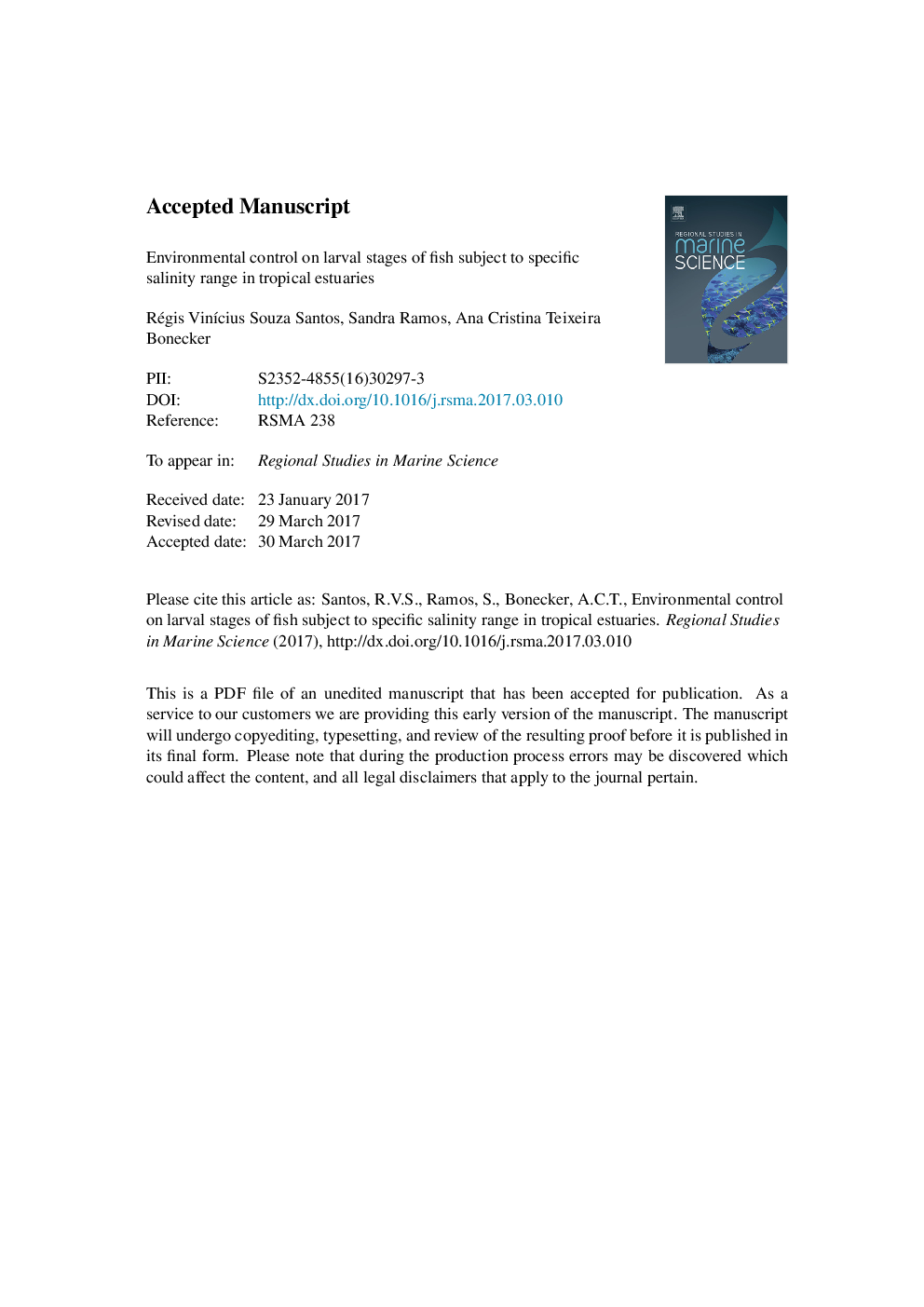| کد مقاله | کد نشریه | سال انتشار | مقاله انگلیسی | نسخه تمام متن |
|---|---|---|---|---|
| 5758074 | 1622815 | 2017 | 33 صفحه PDF | دانلود رایگان |
عنوان انگلیسی مقاله ISI
Environmental control on larval stages of fish subject to specific salinity range in tropical estuaries
ترجمه فارسی عنوان
کنترل زیست محیطی در مراحل لارو ماهی با توجه به محدوده شوری خاصی در استوایی های گرمسیری
دانلود مقاله + سفارش ترجمه
دانلود مقاله ISI انگلیسی
رایگان برای ایرانیان
کلمات کلیدی
لاروهای ماهی، اعمال زیست محیطی، تجزیه و تحلیل متقابل سیستم، استراحتگاه ها، برزیل،
موضوعات مرتبط
مهندسی و علوم پایه
علوم زمین و سیارات
اقیانوس شناسی
چکیده انگلیسی
In this study, we used a comparative cross-system analysis and a standardized methodological approach to understand which abiotic parameters, in addition to salinity, can play an important role in determining larval fish assemblages in tropical estuaries. Surveys were performed by using surface trawls in the same water mass (salinity ranging from 15 to 25) in four Brazilian estuaries (Macaé, São João, Bracuà and Perequê-Açu) from May 2013 to March 2015. Water temperature, oxygen saturation, pH, chlorophyll-a, nitrate, nitrite, ammonia, phosphate and total particulate matter were obtained at each sampling area. Comparative analysis of structural attributes of larval fish assemblages, showed inter-estuarine differences in terms of total abundance and diversity. Perequê-Açu Estuary registered the highest abundance levels and was highly dominated by a typical anadromous species Anchoviella lepidentostole. Macaé Estuary presented the most diverse larval fish assemblage, which was comprised by several marine species. Temperature and precipitation, in addition to salinity, were the main environmental variables regulating the larval fish assemblages. Temperature has played an important role in determining anadromous species abundance, since the greatest abundances were associated with high water temperatures recorded mainly in Perequê-Açu Estuary. Precipitation was responsible for episodic events of runoff in BracuÃ, São João and Perequê-Açu estuaries, where the high precipitation collaborated to carry anadromous larvae from the spawning habitat to the estuarine zone. Conversely, the low precipitation in Macaé Estuary favored the immigration of marine species due to the decrease of the river flow. Oxygen saturation and nutrient load could have operated in an indirect way, through their effect on food supply, but further studies are necessary to investigate this question. Our study highlighted that fish larvae are highly sensitive to environmental variations and emphasized that conservation of estuarine habitats is essential to ensure success in the fish recruitment.
ناشر
Database: Elsevier - ScienceDirect (ساینس دایرکت)
Journal: Regional Studies in Marine Science - Volume 13, May 2017, Pages 42-53
Journal: Regional Studies in Marine Science - Volume 13, May 2017, Pages 42-53
نویسندگان
Régis VinÃcius Souza Santos, Sandra Ramos, Ana Cristina Teixeira Bonecker,
